Growing strawberries (garden strawberries) in a greenhouse almost all year round is labor-intensive and very expensive. For the first time, berries began to be harvested outside the fruiting season in Western Europe starting in the 80s of the 20th century. The technology came to Russia not so long ago, but has already become very popular not only among industrialists, but also among small farmers. Commercial plantings of strawberries in greenhouses are increasing year by year.
Requirements of strawberries to environmental factors when grown in a greenhouse
The main purpose of growing strawberries in a greenhouse is to obtain an off-season harvest of berries, when the strawberry season has not yet arrived or has already ended. The temperature in the greenhouse must be at least 12°C for the growth of peduncles and more than 20°C for normal fruiting. At temperatures above 30°C, the growth of flower stalks slows down and the pollen becomes infertile. The optimal temperature during flowering should be 18-23°C, during fruiting 20-25°C.
In protected soil, plants' requirements for air humidity change. Strawberries themselves are a crop from a hot and humid tropical climate. It responds well to high air humidity, but during different periods of growth the requirements for this indicator are different. During the period of foliage growth and flower stalk growth, it is necessary to create increased air humidity in the greenhouse by placing buckets of water in the aisles or watering the paths. During the growth of foliage and protrusion of flower stalks, the indicator should be 90%, during the flowering period - 75-80%, during the fruiting period - 85-90%.

To successfully grow strawberries in a greenhouse, you need to monitor the temperature and humidity.
During flowering, the humidity should be slightly lower, since at high humidity the volatility of pollen is noticeably reduced. At this time, there is no need to allow condensation on the walls of the greenhouse.
During the period of ovary growth and berry filling, high humidity is necessary, but at this time air stagnation is unacceptable, the greenhouse must be periodically ventilated, otherwise fungal diseases cannot be avoided.
Only industrial enterprises and large farms can grow strawberries in a greenhouse all year round.For ordinary summer residents, it is possible to obtain a harvest from early spring to late autumn. But for this it is necessary to make heating. It is easier for gardeners to make an earth oven and run pipes between the beds. Then in cold weather you can ensure the desired temperature without any problems.
Light is just as important as heat. Remontant strawberries can form flower buds regardless of the length of daylight hours, and single-fruiting varieties must be illuminated. They form flower stalks when the day length is 12-14 hours. Therefore, when growing strawberries almost all year round in a greenhouse, additional lighting is necessary.
Greenhouses for growing strawberries
Polycarbonate greenhouse. The best option for growing plants would be a polycarbonate greenhouse.
It consists of several layers (usually 2-3) with an air gap. Such a greenhouse retains heat well at night. The difference between internal and external temperatures can be 7-10°C at night, and up to 15-20°C during the day. During the day, the air inside quickly heats up, and in order not to overheat the strawberries, doors or vents are opened.
This greenhouse is very durable: it will last at least 20 years and does not need to be disassembled for the winter.
Film greenhouse. Less comfortable than polycarbonate.
The film is a short-lived material, it lasts for 1 season, it must be removed for the winter. It retains heat much less: the difference between the temperature inside and outside the greenhouse is 4-6°C at night, 10-13°C during the day. It will not be possible to obtain a strawberry harvest in such a greenhouse in early spring and late autumn. It is more difficult to create a microclimate in a film greenhouse than in a polycarbonate one.
Glass greenhouse. This is the worst option for growing strawberries in protected ground.
Glass itself retains heat well, but since such greenhouses are built from old frames, there are numerous cracks at the joints and in order for the structure to retain heat, they must be treated with sealant. Without this, a greenhouse made of frames is only suitable for protection from wind and precipitation, but it is impossible to grow strawberries in it outside the natural ripening season.
Varieties suitable for growing in protected soil
Foreign varieties are more suitable for growing in greenhouse conditions than domestic ones. Since Europe has a milder climate and warmer winters, European varieties grow well in greenhouses. Domestic varieties obtained in the field, when the specimens most adapted to environmental factors were selected, are less comfortable in protected soil, although a number of them can also be grown under a roof.
Strawberries of all ripening periods are grown in greenhouses: early, middle and late. The yield of early varieties, as in open ground, is 2 times less than that of medium and late varieties. Remontant varieties are also suitable for these purposes. Compared to natural conditions, the yield is 1.4-1.6 times higher.
The most suitable for growing in greenhouses are Dutch and Italian varieties. Of the early ones, the most commonly grown are:
- Italian varieties Syria, Asia, Clery, Anita;
- Dutch Elvira, Rumba;
- Danish Early Zephyr.
Average:
- Italian Alba, Marmelado;
- Dutch Vima Kimberly, Vima Zanta, Elsanta, Sonata;
- French variety Darselect;
- British Everest.
Late:
- Dutch Vima Xima, Vima Tarda;
- Japanese strawberry Chamora Turusi (but it is very capricious even in greenhouse conditions).
To obtain an early harvest, it is better to grow domestic varieties not in a greenhouse, but to install a film tunnel in the garden bed.During the day it is opened from the ends, and at night it is completely closed. With this method of cultivation, the yield increases by 1.2-1.4 times, and fruiting occurs 2-3 weeks earlier.
The following varieties are grown from remontants:
- Irma;
- Elizabeth and Elizabeth 2;
- Albion;
- Selva;
- Temptation;
- Vima Rina.
Remontant strawberries grow well in a greenhouse. Since its peak yield occurs at the end of August-beginning of September, when it is already quite cold for it in the open ground, all the necessary conditions for obtaining a high yield can be created in protected ground.
Obtaining seedlings
Strawberries are grown indoors either from runners or frigo seedlings.
Growing a Mustache
For protected soil, take strong, healthy tendrils from bushes that bear fruit for 2-3 years. The best planting time is early to mid-August. Young rosettes are planted immediately in the greenhouse. Some recommend first rooting them in a separate bed and only then replanting them under a roof. There is no need to do this, because when replanting twice, some of the roots are damaged, the plants then take a long time to take root, and this delays flowering. If there is a need to root the mustache, then it is better to do this in peat pots, which then dissolve in the ground.
August is the optimal time for planting, but mustaches can be planted in September and October. In this case, heating and lighting costs for seedlings increase. Flowering begins after 1-1.5 months and depends on growing conditions.
Frigo seedlings
The frigo technology was developed by Dutch strawberry growers with the goal of producing strawberry crops all year round.The method spread quite quickly and now even summer residents are trying to grow strawberries using this technology.
"Frigo" means "cold". The essence of the method is that the root system of the bushes with leaf buds is stored in the refrigerator at a temperature of 0-2°C and a humidity of at least 85%. At the slightest deviation from the norm, frigo dies.
To harvest seedlings, young mother bushes are dug up in November, when the plants have begun their dormant period, shaken off the ground and all leaves except the youngest are cut off (these leaves are very small and are located at the heart - the growth point of the strawberry bush). Under no circumstances should you trim the roots; this will lead to the death of the seedlings.
The dormant period for strawberries begins when the temperature remains stable at 0 - -3°C. A sign that the seedlings are viable are the roots are light brown, white at the break, with whitish tips. For frigo, take bushes with a large heart. Plants with a small heart will not produce a high yield.
The dug up bushes are soaked in a fungicide solution (Hom, Topaz, Fundazol, Skor) for 2-3 minutes, dried, tied into bunches by variety and put in the refrigerator for storage. Frigo should be stored in linen or paper bags. Plastic film does not allow air to pass through, and the roots rot and die in it. Seedlings in cold conditions remain viable for up to 10 months and can be planted in the ground at any time.
You should not buy frigo in stores. As a rule, already dead seedlings are sold there, since the storage conditions are grossly violated. It can be easily identified by its black roots that have lost their elasticity.
Soil preparation
The soil in the greenhouse, as in open ground, is prepared in advance.You cannot plant strawberries after tomatoes, as they will take a long time to take root and the yield will be lower. If cucumbers were previously grown in closed ground, then increased doses of nitrogen fertilizers are applied.
3-4 weeks before planting the rosettes, the soil is dug up to a depth of 18-20 cm (chernozem soils are 25-30 cm). Strawberries are more responsive to organic fertilizers, so it is advisable to apply completely rotted manure (chicken manure is better, it is most suitable for this crop), compost or peat (1 bucket per 1 m2).
If it is impossible to add organic matter, then use azophoska, nitroammophoska or a special fertilizer “For strawberries” (in addition to the main nutrients, microelements are also added) 2-3 tablespoons per m2.
If there is wood ash, then add 2-3 cups of it per m in 1.5-2 months.2, and 15-20 days before planting, nitrogen fertilizers are used: urea, ammonium nitrate, nitrophos, 2 tbsp. spoons/m2.
Technology for growing strawberries in a greenhouse
In the northern regions, growing strawberries in a greenhouse all year round is still a fairy tale. The costs of its production are too high. This is only possible in the south (Crimea, the Black Sea coast of the Krasnodar Territory, the North Caucasus) and even then with sufficient persistence. You can grow strawberries in summer cottages from April (in the southern regions from March) to October (November).
Growing young rosettes
You can plant seedlings in a greenhouse at any time of the year, the main thing is that the necessary microclimate is created there. The mustaches are planted on the garden bed in rows or in a checkerboard pattern. If the crop will be grown in winter, then high ridges are made, and the passages are mulched with straw, sawdust, etc.
The distance between plants is the same as in open ground: 40x60 for middle and late varieties, 20x40 for early varieties.
When planting seedlings, the temperature should not exceed 12-15°C. After planting, the temperature is gradually increased. The optimal temperature for flowering is 18-22°C. If the temperature in the greenhouse when planting seedlings is higher, then all the leaves are cut off, leaving 2-3 small young leaves. This technique significantly reduces the area of water evaporation and allows the roots to grow stronger.
The rosettes begin to bloom after a month. The first flowers are plucked off, allowing the bush to grow a little stronger. During short daylight hours, the bushes are additionally illuminated. The buds of single-fruiting strawberries are formed when the day length is at least 12 hours. For normal fruiting, the crop must be illuminated for at least 14 hours a day.
Watering is carried out as the soil dries out: once a week during growth and flowering and 1-2 times a week during fruiting. Here it should be taken into account that in closed ground the humidity is always higher than in natural conditions, so the soil dries out more slowly and all watering times are very approximate; you should always be guided by the situation.
You need to be very careful with fertilizing. If the bushes are overfed, they will become fat and will not produce a harvest. In the case of growing strawberries from October to March, you can add microfertilizers (preferably wood ash) during flowering. In general, there is no need to experiment here. Excess fertilizers not only reduce yields, but also lead to diseases.
If the crop is grown in a season when there are no insects or pollination by them is difficult, then artificial pollination is carried out.To do this, you can bring a household fan into the greenhouse and turn it on at high speed for 5-7 minutes. If this is not possible, then manual pollination is carried out using a broom or paint brush.
Strawberries are grown in a greenhouse for no more than 1-2 years (most often a year), then the bushes are renewed.
Growing frigo seedlings
Frigo can be planted in a greenhouse all year round. To obtain a continuous harvest, each subsequent batch is planted at intervals of 1.5-2 months.
Seedlings removed from the refrigerator are defrosted within 12-18 hours. As soon as it thaws, the roots are immersed in cold water to replenish the liquid lost during storage. After this, the frigos are immediately planted. The roots should not be allowed to be exposed to air for more than 15-20 minutes, as this will lead to the death of the root hairs and then it will be extremely difficult for the strawberries to recover.
When planting, the roots should be spread evenly; they should not be planted in a bunch; the heart should never be covered with soil.
Further cultivation and care are the same as for rosettes.
Difficulties in growing strawberries in a greenhouse
Most often, problems arise due to the inability to ventilate the greenhouse and due to high air humidity.
- In closed ground with high humidity, fungal diseases can become severe. Gray rot and powdery mildew are especially dangerous. Spots are not so dangerous because the bushes are usually thrown away after harvesting. To prevent diseases, 3-4 treatments are carried out in the greenhouse. Even before planting the seedlings, the ground and walls are treated with fungicides, and the planting material is treated. During the growth of rosettes, 2 preventive sprays are carried out with the preparations Skor, Euparen, Thiovit Jet, Topaz. You cannot spray the bushes after the ovaries have formed.Therefore, if signs of the disease appear, the affected parts of the plant (berries, leaves) are collected manually and removed from the greenhouse.
- In protected soil, where it is warm and humid, slugs often appear. Traps are used to catch them. It is better to mulch the soil when growing crops. The use of molluscicides is extremely undesirable, since these drugs are quite toxic.
- The greenhouse must be regularly ventilated to prevent the occurrence of diseases. During the cold season, ventilation is excluded, so a fan is used to create at least some air movement.
It is much more difficult to get rid of diseases in closed ground than in open ground, since the microclimate itself contributes to their appearance.
Moreover, under such conditions, diseases spread extremely quickly. Therefore, preventive spraying is strictly required.
Advantages and disadvantages of greenhouse cultivation
Advantages.
- Possibility of obtaining berries all year round.
- Productivity is 1.5-2 times higher than in open ground.
- The taste of the berries is higher.
Flaws.
- The process is very labor-intensive; only an aspiring enthusiast can put it into practice.
- High cost.
- It is difficult to provide the necessary microclimate during cultivation.
- The incidence of disease is higher than in open ground.
Greenhouse cultivation of strawberries is absolutely not suitable for amateur gardeners, since it is extremely labor-intensive and generally unprofitable. It is very difficult for a summer resident to create all the necessary conditions on his plot, and the costs will pay off for more than one season. Yes, and allocating space for a greenhouse for strawberries on a small summer cottage is very problematic.
This method is best used on industrial plantings, large and medium-sized farms.
Other useful articles on growing strawberries:
- Strawberry care. The article describes in detail how to care for a strawberry plantation from early spring to late autumn.
- Strawberry pests. What pests can threaten your plantation and how to effectively combat them.
- Strawberry diseases. Treatment of plants with chemicals and folk remedies.
- Strawberry propagation. How to propagate strawberry bushes yourself and what mistakes gardeners most often make.
- Growing strawberries from seeds. Is it worth it for ordinary summer residents to do this?
- The best varieties of strawberries with photos and descriptions. A selection of the newest, most productive and promising varieties.
- Planting strawberries in open ground. Are you going to tackle strawberries? Then this is the very first article you need to read.
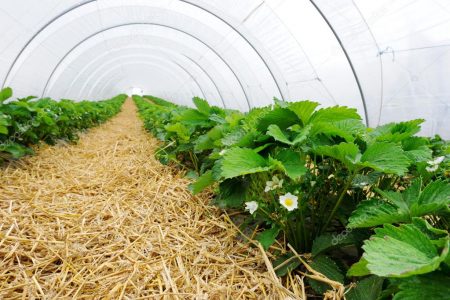
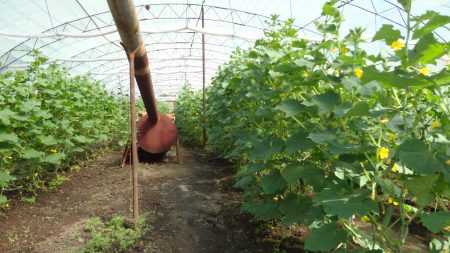
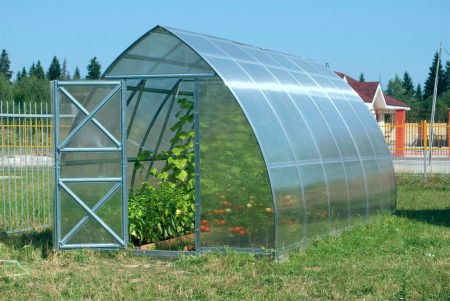
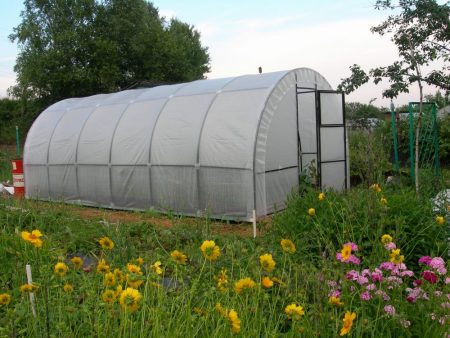
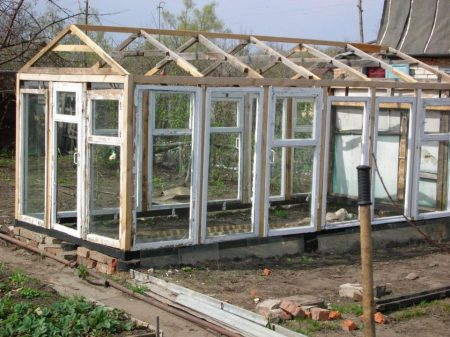
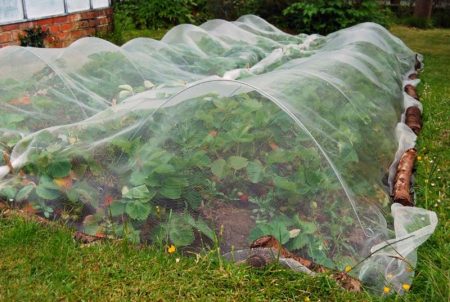
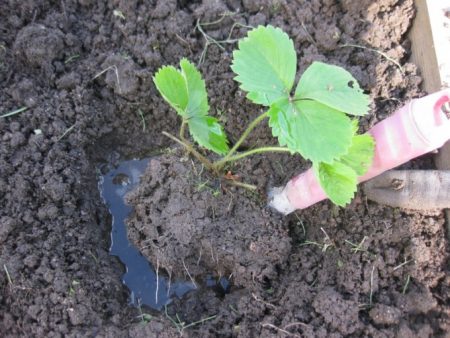
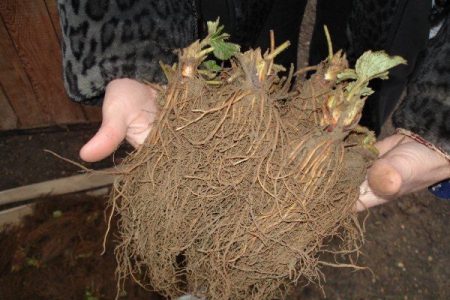
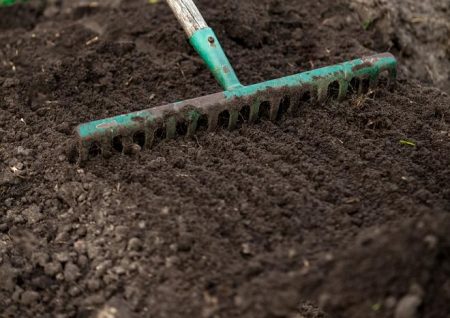
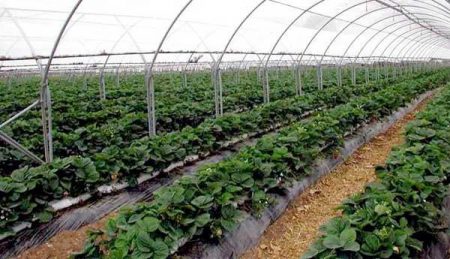
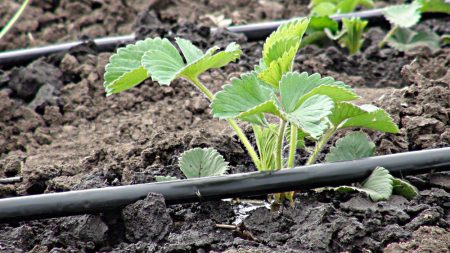
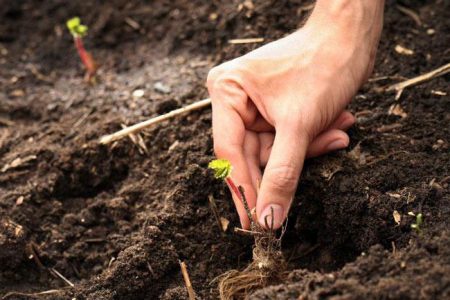
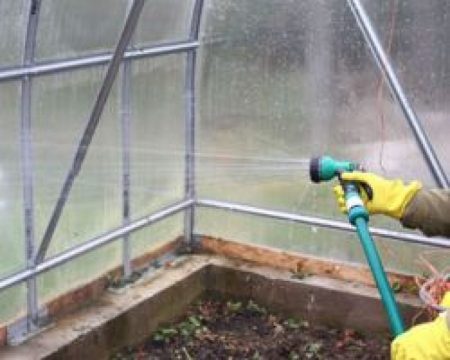


 (3 ratings, average: 3,33 out of 5)
(3 ratings, average: 3,33 out of 5) CUCUMBERS NEVER GET SICK, I'VE BEEN USING ONLY THIS FOR 40 YEARS! I SHARE A SECRET WITH YOU, CUCUMBERS ARE LIKE THE PICTURE!
CUCUMBERS NEVER GET SICK, I'VE BEEN USING ONLY THIS FOR 40 YEARS! I SHARE A SECRET WITH YOU, CUCUMBERS ARE LIKE THE PICTURE! You can dig a bucket of potatoes from each bush. Do you think these are fairy tales? Watch the video
You can dig a bucket of potatoes from each bush. Do you think these are fairy tales? Watch the video
 How our fellow gardeners work in Korea. There is a lot to learn and just fun to watch.
How our fellow gardeners work in Korea. There is a lot to learn and just fun to watch. Eye trainer.The author claims that with daily viewing, vision is restored. They don't charge money for views.
Eye trainer.The author claims that with daily viewing, vision is restored. They don't charge money for views. A 3-ingredient cake recipe in 30 minutes is better than Napoleon. Simple and very tasty.
A 3-ingredient cake recipe in 30 minutes is better than Napoleon. Simple and very tasty. Therapeutic exercises for cervical osteochondrosis. A complete set of exercises.
Therapeutic exercises for cervical osteochondrosis. A complete set of exercises. Which indoor plants match your zodiac sign?
Which indoor plants match your zodiac sign? What about them? Excursion to German dachas.
What about them? Excursion to German dachas.
Hello, dear friends, I myself grow strawberries in greenhouses in larger volumes, and I can say that strawberries love light, water and warmth, and I can give good advice regarding light, for good and economical lighting, choose metal halide lamps as they will last much longer than rest.